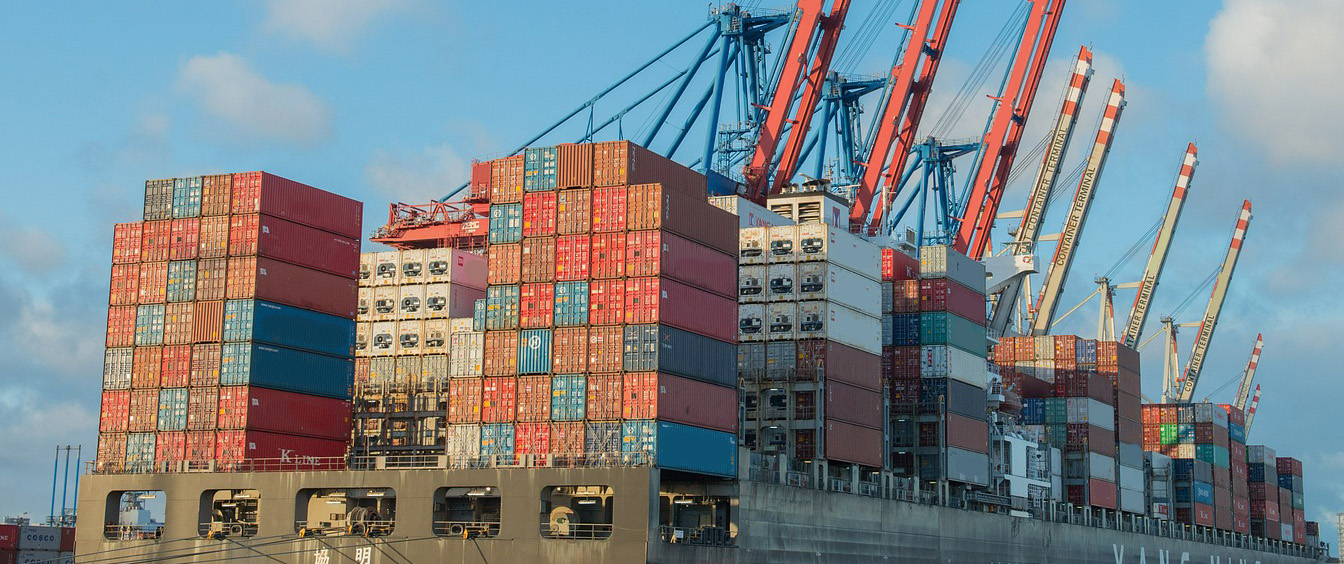Can a 3PL Partner Help?

August 24, 2021
The global supply chain will continue to take hits for the foreseeable future. Whether you receive product directly from non-domestic manufacturers; use a 3PL to handle product transportation; receive goods from distributors or retailers that import them from other countries; or receive goods manufactured in the US from raw materials that are imported, you'll be impacted.
Congested Ports and covid shutdowns
Ports on the West Coast of the US have been dealing with backlogs for some time, due in part to a worker shortage. It’s telling that a decrease in the amount of ships waiting in ports to unload cargo will likely be due to disruptions earlier in the supply chain, rather than local solutions. For instance, one of the largest ports in world, the Ningbo-Zhoushan port in China, was recently shutdown due to COVID restrictions. There have also been factory shutdowns in Bangladesh and Vietnam. Container shortages and weather-related delays are further causing problems throughout the Pacific Rim and beyond.
At an increasing rate, companies have turned to alternate methods of shipping product. A greater amount of product from Asian-based manufacturers has started coming through ports along the Gulf of Mexico, and along the US East Coast. However, those ports are also now facing backlogs, as they are dealing with a greater amount of product than what they are accustomed to handling. Backlogs at ports have, in turn, led to a dramatic decrease in shipping containers, as product must remain in the containers until they are unloaded.
Issues with Freight Transport Via Truck, Train, and Air
Bottlenecking is also occurring with intermodal transportation. Trucker shortages mean that any product that needs to be transported by land, after being transferred by ships or rail, is likely to incur delays and higher freight costs. Not surprisingly, rail has developed its own issues. Congestion at major rail terminals is high in some locations because product is being stored in railyards, which aren’t designed for that purpose. Worker shortages also exist for rail companies. Additionally, due to the increased use of trains to transport product, there’s been a shortage of chassis, which are used to transport product from train to trucks.
Delays at US airports are also negatively impacting the shipment of freight from overseas and within the US. Worker shortages are again at play, along with the higher than normal demand for air freight. Aside from delays, shipping by air adds additional shipping costs, as it is a far more expensive option than shipping by ocean.
Warehouse Demand
There has also been an extra demand on warehouses, as some product is being stored in them to free up ships, planes, trains, and trucks. This, in turn, has contributed to the decrease in available shipping containers—as the product temporarily moved into warehouses is typically kept in their original containers. Worker shortages in warehouse facilities have also led to slower than usual unloading and loading of product. Some companies are importing a greater quantity of product now to store in warehouses in anticipation that the shipping issues will only increase as we move towards peak shipping season.
Working with a 3PL
While there is no quick solution to bypassing these supply chain issues, which are likely to last into the 1st quarter of 2022, there are clear benefits to finding a partner with expertise in supply chain management. Those companies working directly with 3PL's will need to be assured that their partners are aware of the latest transportation and storage issues and have good insight into trends that are likely to impact freight in the near future. The right 3PL supply chain management partner can offer you advantages such as: greater visibility in the supply chain, knowing where product is at all times; the ability to navigate around potential impasses due to an extensive network of shippers; overflow storage capability; and rail transload capabilities at their facility, with their own staff to load/unload product from rail to truck and vice versa, as well as from warehouse to rail.
What questions can you ask your current or potential 3PL partner to ensure that partner will be a good fit to handle your freight storage and transportation needs? Taking into account the products you procure, consider the following.
-
Do you have additional capacity for overflow storage
-
By how much (if any) do you anticipate freight shipping will increase over the next quarter
-
How good is your supply chain visibility?
-
What additional supply chain logjams do you anticipate in the next quarter? What are you doing to navigate them?
-
Do you have your own rail transload capabilities?
Sources:
Enda Curran, "Pacific port problems pile more strain on bustling trade lane," Bloomberg, August 18, 2021, https://www.bloomberg.com/news/newsletters/2021-08-18/supply-chains-latest-china-s-port-shutdowns-hit-world-trade-outlook
Gary Frantz, “Facing an unprecedented surge, where do ports and container lines go from here?” DC Velocity, August, 2021, https://www.dcvelocity-digital.com/dcvelocity/library/articleId/3942167
David J. Lynch, "From ports to rail yards, global supply lines struggle amid virus outbreaks in the developing world," The Washington Post, July 26, 2021, https://www.washingtonpost.com/business/2021/07/27/supply-chains-freight-rail-ports
Claire Bushley and Matthew Rocco, "'The global supply chain was not built for this': Freight delays hammer US," Financial Times, August 1, 2021, https://www.ft.com/content/03a693a7-0445-41dd-a7f3-c1b6f162e5ef
Joanna Marsh, “US Class I railroads to feds: Don’t blame us,” FreightWaves, August10, 2021, https://www.freightwaves.com/news/us-class-i-railroads-to-feds-dont-blame-us
Patrick Burnson, “Pacific Rim port congestion is a consequence of complex issues,” Supply Chain Management Review, August 20, 2021, https://www.scmr.com/article/pacific_rim_port_congestion_is_a_consequence_of_complex_issues
